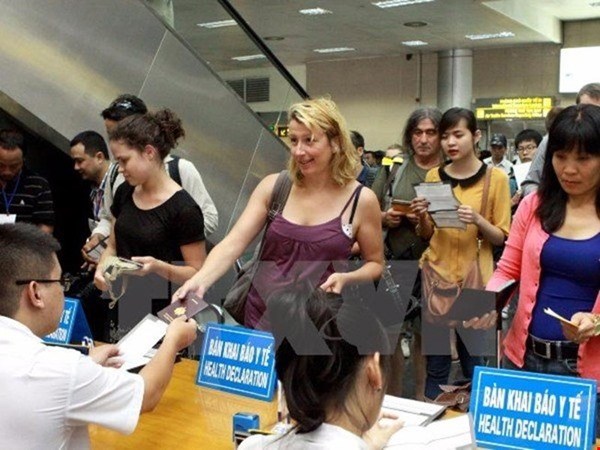E-visa pilot scheme boosts Vietnam’s tourism
The electronic visa (e-visa) pilot scheme, implemented since the beginning of this year, has had a positive impact on Vietnam’s tourism industry.

Passengers at Noi Bai International Airport
According to the Vietnam National Administration of Tourism (VNAT) under the Ministry of Culture, Sports and Tourism, after four months of implementation, more than 22,000 tourists from the US, the UK, France, Poland, Czech Republic, Germany, Ireland, Slovakia, Japan, Sweden and China who do not use biometric passports have requested e-visas on the country’s immigration portal at https://www.immigration.gov.vn.
Some 21,000 tourists received e-visas, 12,000 of whom entered the country. Security procedures were conducted properly at airports and border gates, ensuring the safety of passengers.
Vu The Binh, Standing Vice Chairman of the VNAT, said that the issuance of e-visas has made it easier for citizens of 40 foreign countries to visit Vietnam.
The visa-exemption policy for citizens from the UK, France, Germany, Spain and Italy, which has been in force since July 2015, has also boosted the number of European tourists to the country while maintaining tourism revenue, he said.
Statistics showed that total arrivals from these five countries to Vietnam increased 15.4 percent within 12 months since the policy was launched. In the first four months of 2017, the number of tourists hit 333,000, up 15 percent year on year.
The policy helped Vietnam attract 720,000 tourists from these countries in the first 12 months – an increase of 96,000 tourists compared to the same period in 2014 – yielding total revenues of 126 million USD, while the deficit in visa fees caused by the exemption was 21.6 million USD, Binh said.
The number of European tourists to Vietnam last year increased by 58,000, who spent 76 million USD, while the deficit in visa fees was 2.3 million USD, he added.
The increased number of tourists and revenues created development opportunities for several types of tourism service, he said.
Simplifying immigration procedures is a common trend around the world. According to the Global Competitiveness Report 2016-17 from the World Economic Forum (WEF), the percentage of tourists requesting visas to enter a country decreased from 77 percent in 2008 to 58 percent in 2016.
Some 85 percent of the world’s nations have applied solutions to simplify immigration procedures over the last two years.
In Southeast Asia, apart from Vietnam, which is waiving visas for citizens from 22 countries, Malaysia is waiving visas for 155 countries and territories, Singapore 158, Indonesia 169, and Brunei 58.
These countries are also applying visa-on-arrival and e-visa policies.
VNA
 Vietravel expands business in Indian market
Vietravel expands business in Indian market
 2025 Nha Trang – Khanh Hoa Sea Festival to spotlight cultural heritage space
2025 Nha Trang – Khanh Hoa Sea Festival to spotlight cultural heritage space
Vietnam, a unique destination attracting Indian tourists: Indian newspaper
 Cao Bang eyes new opportunities for cross-border tourism development
Cao Bang eyes new opportunities for cross-border tourism development
 Kien Giang strives to attract tourists to finish the year on high note
Kien Giang strives to attract tourists to finish the year on high note
 Rivers provide major resources to boost Vietnam’s tourism
Rivers provide major resources to boost Vietnam’s tourism
 Dong Thap plants over 100 ha of flowers for Tet
Dong Thap plants over 100 ha of flowers for Tet
 Donghai Airlines launches direct route to Khanh Hoa
Donghai Airlines launches direct route to Khanh Hoa
 “Carbon footprint” reduction needed for sustainable tourism development: insiders
“Carbon footprint” reduction needed for sustainable tourism development: insiders
Vietnam's tourism likely to boom under 'Six Countries, One Destination' visa initiative




